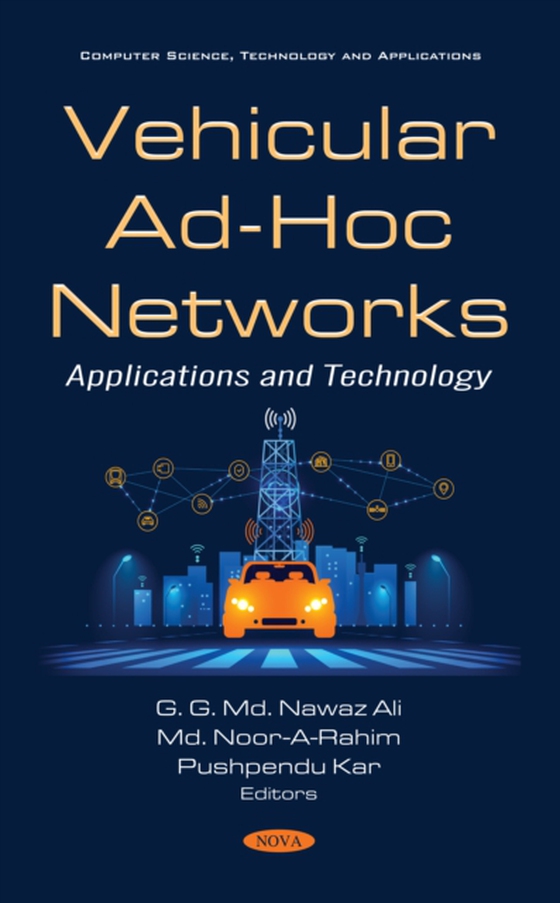
Vehicular Ad-Hoc Networks: Applications and Technology e-bog
2190,77 DKK
(inkl. moms 2738,46 DKK)
From the past decade vehicular ad hoc networks got tremendous attention from the industry, academia and research community. According to US National Highway Traffic Safety Administration (NHTSA), there are more than 30 thousands fatalities caused by the vehicle accidents in the U.S. each year, which worth around 250 billion dollars economic cost annually. Research shows that 82% of these accide...
E-bog
2190,77 DKK
Forlag
Nova
Udgivet
17 juli 2020
Længde
276 sider
Genrer
TRT
Sprog
English
Format
pdf
Beskyttelse
LCP
ISBN
9781536180398
From the past decade vehicular ad hoc networks got tremendous attention from the industry, academia and research community. According to US National Highway Traffic Safety Administration (NHTSA), there are more than 30 thousands fatalities caused by the vehicle accidents in the U.S. each year, which worth around 250 billion dollars economic cost annually. Research shows that 82% of these accidents can be reduced by the successful deployment of vehicular networks, because nearly 75% percent of vehicular crashes are caused by inattentive drivers. Literally, vehicular ad hoc networks means a network forms by the vehicles. But it has been evolved to network with the infrastructure as well due to the inherent intermittent nature of vehicle-to-vehicle (V2V) connection. The high mobility of vehicles, wireless communication loss and range constraints are the main reason for this intermittent V2V connection. So, now vehicular networks means communication between vehicle-to-vehicle (V2V) and vehicle-to-infrastructure (V2I). There are billions of dollars invested to research, deployment and testing of vehicular networks. For the emerging connected and autonomous vehicle (CAV), a stable vehicular networks is the foremost requirement. It is now very much visible that CAV will be the future of Intelligent Transportation System (ITS). The book is dedicated to discuss for the techniques, applications and relevant technologies of vehicular ad hoc networks and its challenges. The first chapter discuss about the routing protocols of vehicular networks. It focuses on different position-based routing protocols and their mechanisms for the successful use of vehicular networks for different applications. The second chapter discusses on the security and privacy issues on vehicular networks. A well-known security technique called Elliptic Curve Cryptography (ECC) is discussed to secure vehicular data from various tampering attacks. The third chapter discusses on the on-demand wireless broadcasting mechanism for improving data dissemination performance in terms of data delivery ratio and response time. A network-coding based approach has been investigated for improving the overall performance of existing classical data broadcast algorithms. The fourth chapter describes how to get a dependable system in the lossy communication medium. This chapter discusses on a number of fault diagnosis techniques, their strengths and weaknesses, and it reviews their implementations in mobile wireless networks. The fifth chapter discusses the basics of Blockchain technology, applications, research challenges and opportunities in the field. Finally, chapter six discuss about the identification and mitigation of the faulty nodes in the wireless network.
 Dansk
Dansk

